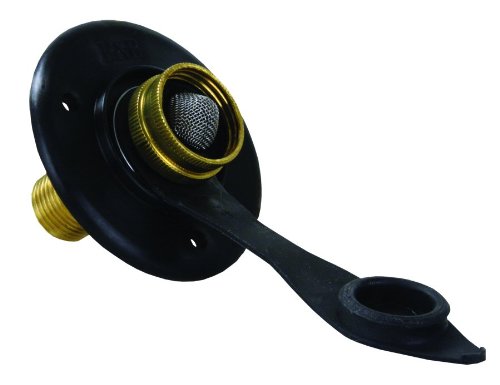The Ultimate Guide To Faucet Flanges: Function, Types, Installation, and Maintenance

- 1. The Ultimate Guide To Faucet Flanges: Function, Types, Installation, and Maintenance
- 1.1. What are Faucet Flanges?
- 1.2. Types of Faucet Flanges
- 1.3. Factors To Consider When Choosing Faucet Flanges
- 1.3.1. Material Selection and Longevity
- 1.3.2. Sizing and Compatibility
- 1.3.3. Aesthetic Appeal and Design
- 1.3.4. Installation Specifications
- 1.3.5. Water Resistance and Seal Effectiveness
- 1.3.6. Brand Reputation and Quality
- 1.3.7. Budget Planning
- 1.4. Installation of Faucet Flanges
- 1.5. Maintenance of Faucet Flanges
- 1.6. In Conclusion
Faucet flanges, while not the most attention-grabbing aspect of a faucet, are integral in upholding the stability, endurance, and visual appeal of your plumbing fixtures. Despite their seemingly modest nature, these components fulfill essential roles, both functional and aesthetic. They bestow a polished appearance to the junction between the faucet and sink, simultaneously acting as a barrier, preventing water from infiltrating cabinets or walls. Within this article, we delve into the importance of faucet flanges, the diverse available types, methods for installation, and crucial maintenance tips.
What are Faucet Flanges?
Faucet flanges, typically crafted from metal or plastic, take the form of circular discs. Their purpose is to cap the openings on the surface where the faucet and pipe pass through during installation. These flanges serve a dual role, acting as both decorative accents and protective barriers. Their primary function is to inhibit water from infiltrating the mounting surface, thereby averting potential damage, mildew, or mold. Moreover, by concealing any irregularities or gaps around the faucet installation area, the flange contributes to a polished, refined appearance.
Types of Faucet Flanges
- Metal Flanges, whether Standard or Decorative: Crafted from robust materials such as stainless steel, brass, or chrome, these flanges boast durability and corrosion resistance. They commonly feature a polished finish, aligning seamlessly with the overall faucet and sink aesthetics.
- Plastic Flanges: Constructed from durable plastics like PVC or ABS, these counterparts offer a lighter weight alternative. They present a range of finishes to suit diverse sink and faucet designs.
- Escutcheon Plates: Broader in size, these plates extend over a larger area around the faucet, commonly utilized to conceal surplus installation holes or wider gaps. They come in various materials and designs to complement different interior styles.
- Decorative Flanges: Geared more towards aesthetic enhancement, these flanges present diverse shapes, finishes, and designs, allowing for a personalized touch to the faucet arrangement.
Factors To Consider When Choosing Faucet Flanges
Choosing the right faucet flanges is pivotal as it significantly influences both the aesthetic and functional aspects of your sink or countertop. To make an informed decision, consider these crucial aspects when selecting your faucet flanges.
Material Selection and Longevity
The material of the faucet flange significantly impacts its durability and functionality. Materials like stainless steel, brass, zinc, and plastic are commonly used. Stainless steel and brass offer superior longevity and corrosion resistance, ideal for long-lasting use. While zinc and plastic options are more budget-friendly, they might not match the durability of metal counterparts.
Sizing and Compatibility
Faucet flanges are available in various sizes to suit different faucets and installation requirements. Ensuring the flange size matches the faucet and mounting surface is vital for compatibility and a leak-free seal. Flanges that are too small might leave gaps, potentially leading to leaks due to inadequate coverage of imperfections or holes in the installation surface.
Aesthetic Appeal and Design
Flanges are offered in diverse designs and finishes to complement various decor styles, ranging from sleek modern designs to traditional or ornate styles. Selecting a flange that aligns with the faucet design and overall aesthetic of the area is crucial for a unified look. Finishes like chrome, brushed nickel, bronze, or matte black can harmonize with other fixtures in the space.
Installation Specifications
Certain faucet flanges are tailored for specific installation methods. For instance, some are designed for wall-mounted faucets, while others suit deck-mounted setups. Ensuring the flange aligns with the installation type and offers easy mounting is important. Additionally, consider the installation method required, whether it involves screws, adhesive, or other hardware, and ensure it suits the intended application.
Water Resistance and Seal Effectiveness
The primary function of a faucet flange is to prevent water from penetrating the wall or mounting surface. Opt for flanges that offer a secure seal, preventing water damage to the surrounding area. Often, rubber gaskets or seals are included with the flange to ensure a watertight connection.
Brand Reputation and Quality
Opting for a reputable brand or manufacturer ensures better quality and reliability. Brands with a solid track record in plumbing fixtures typically produce flanges meeting industry standards and offering warranties, ensuring product quality and performance.
Budget Planning
Establish a budget for the faucet flange purchase. Prices can vary based on material, brand, and design. While choosing cheaper options might be tempting, prioritizing quality and durability is wise, as a higher-quality flange could prove more cost-effective in the long run due to its extended lifespan and reduced maintenance needs.
Installation of Faucet Flanges
The usual steps for installing a faucet flange are as follows:
- Preparing the area: Start by cleaning the space around the installation holes on the sink or countertop where the faucet will be placed.
- Placing the flange: Slide the flange over the faucet or pipe before installing it, ensuring a snug fit against the surface.
- Securing the faucet: Install the faucet through the designated holes, ensuring proper alignment, and follow the manufacturer's instructions to securely fasten it in place.
- Adjusting the flange: Position the flange to cover any gaps or holes, ensuring a smooth and seamless appearance.
- Firmly tightening: Secure both the faucet and flange firmly to prevent any movement, following proper instructions to ensure they are firmly attached.
Maintenance of Faucet Flanges
Proper maintenance is essential to ensure the longevity and performance of faucet flanges:
- Regular Cleaning: Wipe the flanges with a damp cloth to remove dirt, grime, or mineral deposits. Use a mild cleaner if necessary but avoid abrasive materials that could damage the finish.
- Inspect for Leaks: Periodically check for leaks around the faucet and flange area. Address any issues promptly to prevent water damage.
- Tighten as Needed: Over time, faucets might loosen. Periodically check and tighten the faucet and flange to ensure they remain secure.
In Conclusion
Flanges for faucets, though seemingly insignificant, play a crucial role in both the functionality and aesthetics of your plumbing fixtures. They come in diverse types to cater to different requirements and styles. Ensuring the correct installation and upkeep of these flanges is paramount for a smooth and effective plumbing system in kitchens or bathrooms. Recognizing their significance and maintaining them adequately will guarantee that your faucet arrangement remains both visually appealing and operational for an extended period.









